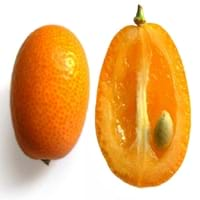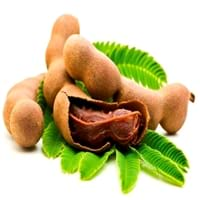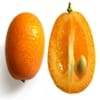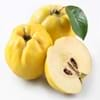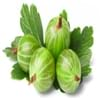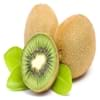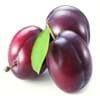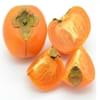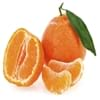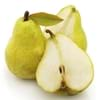Health Benefits
Cancer prevention, Cures gastro-intestinal troubles, Heart care, Increase in haemoglobin, Increases metabolic rate
Boosts immune system, Boosts respiratory health, Cancer prevention, Digestive aid, Piles treatment
General Benefits
Anti oxidant properties, Anti-inflammatory properties, Healing of wounds, Helps in weight loss, Strengthens bones
Beneficial in improving nerve function, Protects against parasites and worms, Relieves pain
Skin Benefits
Anti-aging benefits, Reduces wrinkles, Treatment of dark spots
Anti-aging benefits, Brightens and lightens complexion, Exfoliates skin, Hydrates skin, Treatment of dark spots
Hair Benefits
Promotes longer and healthier hair, Protects hair, Shiny hair
Prevents hair loss
Allergy Symptoms
Abdominal pains, Coughing, Diarrhea, Digestive Problems, Drop in blood pressure, Hives, Itching, Nausea, Tingling sensation in wrist and face, Vomiting, Wheezing
Abdominal pains, Breathing difficulty, Dizziness, Eczema, Fainting, Hives, Itching, Nasal congestion, Swelling of face, Tingling sensation in mouth, Vomiting
Side Effects
Allergic reaction
Decrease in blood sugar levels, Induces acid reflux, Allergic reaction, Tooth decay, May form gallstones
Best Time to Eat
As a snack in the late afternoon, Don't consume at night and before bed, Eat the fresh ones, avoid mixing with any other foods, don't eat after meal., Morning time (before lunch), Strictly avoid empty stomach
Along with meal, As a snack in the late afternoon, Don't consume at night and before bed, Strictly avoid empty stomach
Vitamin B5 (Pantothenic Acid)
Vitamin C (Ascorbic Acid)
Vitamin K (Phyllochinone)
Phytosterol
Not Available
Calories in Fresh Fruit with Peel
Not Available
Calories in Fresh Fruit without Peel
Not Available
Calories in Frozen Form
Not Available
Calories in Dried Form
Not Available
Calories in Canned Form
Not Available
Not Available
Season
Autumn, Winter
Spring, Summer
Varieties
Hong Kong, Marumi, Meiwa, Centenniel and Nagami
PKM 1, Urigam, Hasanur, Tumkur prathisthan, DTS 1 and Yogeshwari
Color
Orange, Red, Yellow
Brown, Reddish-brown
Inside Color
Orange
Brown
Shape
Round
Curving Cylinder
Taste
Sweet, Tart
Sour-Sweet
Soil Type
Clay, Sandy loam, Well-drained
Loam, Sandy, Sandy loam, Well-drained
Climatic Conditions
Cold, Warm
Humid to dry, Rainfall, Warm to hot climate
Facts about
- The entire kumquat fruit is edible, except few seeds.
- The taste of kumquat skin is sweet while inner flesh is tart.
- There are some hybrid varieties of kumquats such as mandarinquats, orangequats and limequats.
- Tamarind is used to prevent body odor.
- African children use the tamarind seeds in games.
- No cases of tamarind toxicity or allergy reported till date.
Other Countries
Brazil, Mexico, Spain, United States of America
Africa, Australia, Brazil, China, Mexico, Nigeria, Sudan, Taiwan
Top Importer
United Kingdom
United States of America
Top Exporter
China
Thailand
Botanical Name
Citrus japonica
Tamarindus indica
Synonym
Fortunella margarita
Tamarindo, tamarindus
Subkingdom
Tracheobionta
Tracheobionta
Division
Magnoliophyta
Magnoliophyta
Class
Magnoliopsida
Liliopsida
Species
C. japonica
Tamarindus indica
Generic Group
Citrus fruit
Tamarind Sub
Difference Between Kumquat and Tamarind
We might think that Kumquat and Tamarind are similar with respect to nutritional value and health benefits. But the nutrient content of both fruits is different. Kumquat and Tamarind Facts such as their taste, shape, color, and size are also distinct. The difference between Kumquat and Tamarind is explained here.
The amount of calories in 100 gm of fresh Kumquat and Tamarind with peel is 71.00 kcal and Not Available and the amount of calories without peel is Not Available and 239.00 kcal respectively. Thus, Kumquat and Tamarind belong to Low Calorie Fruits and High Calorie Fruits category.These fruits might or might not differ with respect to their scientific classification. The order of Kumquat and Tamarind is Sapindales and Fabales respectively. Kumquat belongs to Rutaceae family and Tamarind belongs to Fabaceae family. Kumquat belongs to Citrus genus of C. japonica species and Tamarind belongs to Tamarindus genus of Tamarindus indica species. Beings plants, both fruits belong to Plantae Kingdom.
